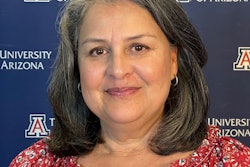Choosing Cultural Competence Over Diaspora Division
Living in diverse sections of New York and Los Angeles during the 1960s and ’70s, I learned early that people of the same race don’t always consider themselves “brothers.” Some Blacks are
Haitian, some Jamaican, and others are from Brooklyn. “I’m Black and I’m proud” might resonate with all, but only one is likely to respond with the affirming expression, “Word.” Puerto Ricans and Chicanos are linguistically linked, but if you invite them over for frijoles and serve refried beans, one will be disappointed. Mistake a Chinese kid for Japanese and you might have to fight. This was my world growing up. Failing to recognize and respect intra-racial distinctions, I learned, could lead to trouble.
Race divided by culture equals discord. Diaspora division, as I call it, seemed to be the prevailing formula. For centuries, it has played out: the Greeks warred with the Macedonians much as the Chinese now oppress the Tibetans, and the Hutus fight the Tsutsi. Judging by the events of the past few months, it appears 21st century scholars of color are not completely immune to the divisive dynamics of intra-racial pluralism either.
In our cover story, Black Issues correspondent Pamela Weiger takes a look at Arizona State University, where one former ASU employee says, “ASU is getting to be one big mess for African Americans.” She says Black faculty and staff are being forced out and mistreated, and in some cases being replaced by Hispanics. However, others at ASU say there is no Black-Hispanic rift and if Hispanics are outpacing Blacks in the faculty ranks there, it’s simply a matter of their representation in the community (see pg. 20.)
Also featured in this Hispanic focus edition, correspondent Roberto Rodriguez provides an update on how scholars in Chicano studies and Latino studies are working through their differences and redefining their place in the academy (see pg. 26). And recently, the press reported on a Nigerian professor who won a lawsuit against historically Black Virginia State University because it was
determined that he was discriminated against on the basis of his African origin.
Examining these incidents within a historical context, it seems the intra-racial tensions that Blacks, Asians and Latinos are currently experiencing in the academy are a contemporary version of what White scholars experienced in the 19th and 20th centuries. Western Civilization has evolved over the decades, for example, to take into account the diverse perspectives of the British, French, Germans, Italians, Dutch and other Europeans. Not long ago, a Jewish scholar teaching a course on the Holocaust was unheard of. But times have changed.
As relative newcomers to the academy, scholars of color are just beginning to achieve the type of critical mass and diversity that allows intra-racial dialogue to occur. The question now is, will we choose to overcome the diaspora division formula? As the intra-racial diversity increases, will we fight among ourselves to the detriment of historically Black institutions, and Chicano, Asian and all ethnic studies? Or will we choose to apply cultural competency to our respective situations?
Cultural competency has traditionally been construed as to the ability to function effectively in a multi-racial society. But as the stories in this edition indicate, cultural competency has intra-racial
applications as well.
There are, no doubt, some White scholars who relish the intra-racial sparring that is occurring among scholars of color. As long as African Americans are arguing with Africans, Chicanos are feuding with Puerto Ricans, and Chinese Americans are at odds with South Asians it is harder for them to address the problems they have with other scholars of color and with White folks.
Ironically, models for solving these differences may be found in the way White scholars learned to overcome their cultural differences. Whether scholars of color will choose to replicate those strategies or to devise new ones is up to them. Feuding with those of the same race who are culturally different, however, is a formula for failure.
Cheryl D. Fields
Editor-At-Large
© Copyright 2005 by DiverseEducation.com















